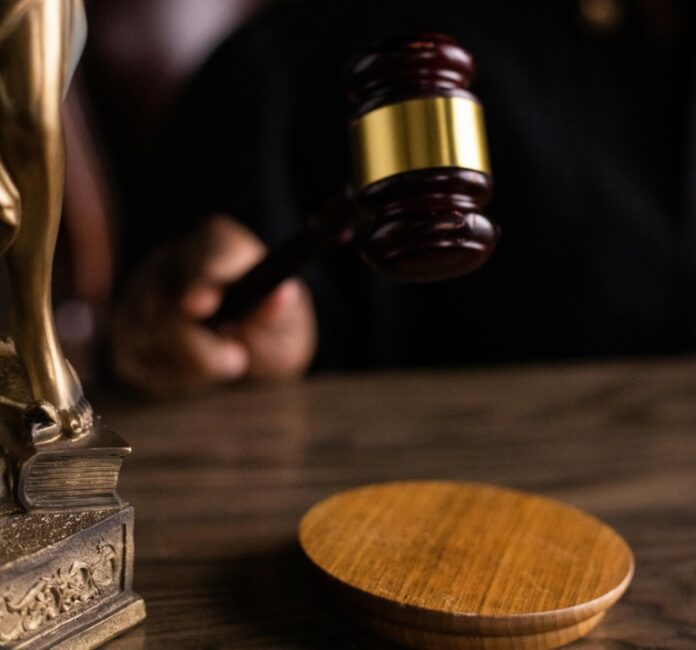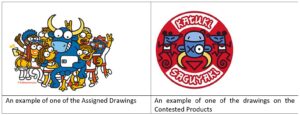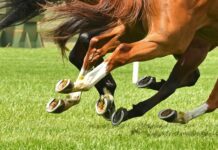
Facts of the case
Kukuxumusu Ideas S.L. (hereinafter, “Claimant”) filed a copyright infringement action with the Commercial Court of Pamplona No. 1 against its former creative director, Mikel Urmeneta, several other former illustrators (collectively referred to as the “Authors”) and the entity Hombre de Paja, S.L (hereinafter, along with the Authors, collectively referred to as the “Defendants”).
Between 1994 and 2015, the Authors created and assigned numerous drawings of characters that constitute what is referred to as the “Kukuxumusu Universe” (hereinafter, they will be referred to as “Assigned Drawings”) to the Claimant. However, in 2016, the Authors left the Claimant and launched a new enterprise/brand named Katuki Saguyaki. This venture involved selling products on the website shop.katukisaguyaki.com, owned by Hombre de Paja, S.L., featuring drawings that were similar or, in some cases, identical to the Assigned Drawings (hereinafter, “Contested Products”).
Kukuxumusu is a Spanish brand known for designing clothes and clothing accessories; along with other items like home decor accessories. Their products include amusing, simple, and naïve illustrations which represent or parody implausible situations, intellectual works, and traditional festivities such as bull runs.

On 10 March 2017, the Commercial Court of Pamplona ruled that the Contested Products had infringed the copyright of the Assigned Drawings. The Defendants were ordered to cease and desist, and pay damages. It is important to note that the prayer for relief granted was not confined to the Contested Products alone, but also extended to any other items that could include the Assigned Drawings, regardless of the scene, situation, or circumstance they may be depicted in (hereinafter, the “Contested Part of the Prayer for Relief”).
The Defendants appealed the initial judgment, and on October 15, 2019, the Appeal Court of Navarra partially overturned the initial ruling by eliminating the Contested Part of the Prayer for Relief. The Court of Appeal determined that, according to the assignment contracts, the Authors had retained the rights to the individual characters depicted in the Assigned Drawings ─ a distinction the Court made from the specific representation that was assigned to the Claimant, i.e., the Assigned Drawings. Therefore, granting such broad injunctive relief to the Claimant would unjustly restrict the Authors’ future use of the characters under their copyright.
The Court of Appeal further noted that the Authors could potentially use the characters, provided that they do not infringe the Claimant’s copyright over the Assigned Drawings. They noted that this is a matter that should be evaluated on a case-by-case basis.
The Supreme Court’s decision
The Court of Appeal of Navarra’s decision was challenged, this time by the Claimant, who argued that the subject of the assignments contracts is not only each individual drawing, but also the creative elements common to all of them. These elements specify the graphic representation of the characters themselves, irrespective of the change in context or situation they may be placed in. Therefore, the Claimant argued that the Contested Part of the Prayer for Relief infringes on the right of reproduction (Article 18 of the Spanish Copyright Act, hereafter referred to as “SCA”) and the right to create derivative works (Article 21 SCA) (both will be referred to as the “Claimant’s First Ground”).
In addition, the Claimant contended that the Contested Part of the Prayer for Relief restricts the scope of the right to cessation remedy under Article 139.1 of the SCA. The Claimant maintained that during the proceedings, it was found that certain Contested Products, which reproduced an identifiable or substantially identifiable form the Assigned Drawings by representing them in other scenes, situations, or circumstances, infringe the Claimant’s copyright (this will be referred to as the “Claimant’s Second Ground”).
The Supreme Court upheld the decision of the appellate Court, suggesting that the scope of the injunction for creating derivative works should be even narrower. Regarding the Claimant’s Second Ground, the Supreme Court affirmed the reasoning used by the appellate Court.
In relation to the right to create derivative works, the Supreme Court holds that the assignment of this right must be made in respect of a specific work and for a specific act. With this in mind, it reviewed the assignment contracts made between the Claimants and the Authors, categorising them into two groups: a group where the assignment was made for “all exploitation rights” – without specifying the rights nor the acts ─ and; another group where the rights to create derivative works were assigned specifically for the purpose of creating animated works and adapting the Assigned Drawings into audiovisual works of any kind. While the validity of these assignments was not disputed by the parties, the Supreme Court suggests that the first group of contracts would be invalid, and the scope of the Claimants’ protection should be limited to prohibiting the creation of animated works and adapting the Assigned Drawings into audiovisual works of any kind.
Takeaways
- Characters depicted in artworks have autonomy as independently protectable creative works under Spanish law.
- When assigning copyrights, it is important to precisely define the subject matter of the assignment by analyzing the different creative elements that may emerge from the work being assigned.
- Although the SCA does include a supplementary provision to interpret assignment contracts in line with their purpose (Article 43.1), phrases such as an assignment of “all exploitation rights” could potentially render a copyright assignment invalid. Therefore, it’s advisable for parties to always aim for a detailed definition of the rights being assigned and the specific acts for which they are assigned.









